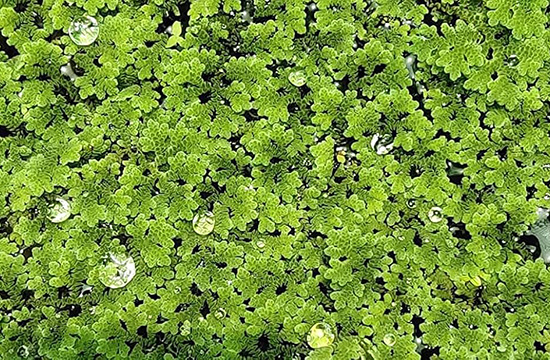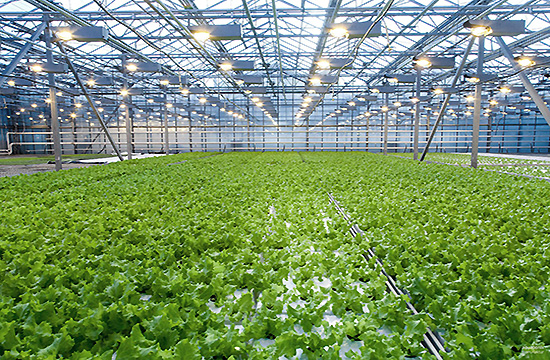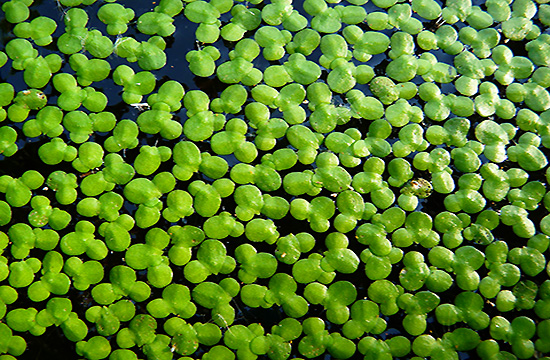Organigogo advocates for and promotes the use of Integrated Aquaculture, mainly through the innovative approach of aquaponics, which marries aquaculture with hydroponics. This revolutionary system offers a sustainable and autonomous food production method with many environmental benefits. Aquaponics significantly reduces water pollution, maximizes resource conservation, and optimizes nutrient utilization by combining fish farming with soil-less plant cultivation. Furthermore, it enhances water savings and boosts efficiency regarding cultivation area utilization.
One key aspect of Organigogo's approach is the incorporation of Lemna and Azolla in their organic aquaculture and wastewater treatment systems. These aquatic plants play a crucial role in removing nutrients and dissolved solids from wastewater, which can eliminate up to 99% of these substances. This process safeguards water quality and contributes to the preservation of aquatic ecosystems. Additionally, Lemna and Azolla yield protein-rich biomass as a valuable byproduct, effectively transforming what would otherwise be considered waste into a resource with tangible benefits.
Organigogo showcases a commitment to sustainability, resource efficiency, and environmental protection by promoting the use of Lemna and Azolla in their designed integrated aquaculture systems. This innovative approach addresses critical ecological challenges like water quality preservation and nutrient recycling and underscores aquaponics' potential to offer promising solutions for mitigating climate change and biodiversity loss. Organigogo exemplifies a forward-thinking approach to food production that prioritizes environmental stewardship and sustainable practices through the strategic use of integrated aquaculture methods.
Symbiotic Solution
Fish waste provides a natural fertilizer source for plants, removing excess nutrients from the water. Plants, in turn, filter and purify the water used for fish. This closed-loop system reduces water pollution and conserves resources.
- Holistic Approach: Aquaponics integrates fish production with vegetable cultivation in water, enhancing nutrient utilization, water savings, and cultivation area efficiency.
- Water Reuse: In aquaponics, water is recycled, conserving water resources, which is particularly beneficial in water-scarce regions. This method also ensures organic fertilization through fish excretions.
- Environmental Impact: Aquaponics reduces land requirements, lowers ecological footprint, and promotes sustainable crop production through nutrient recycling and closed-loop systems.
Economic, Environmental, and Social Advantages
- Economic Prosperity: Aquaponics systems generate dual revenue streams from plant and fish sales, enhancing producer income opportunities and promoting economic growth.
- Environmental Sustainability: Using organic fertilization and recirculation systems, aquaponics minimizes soil-related diseases, optimizes water resources, and mitigates pollution, fostering ecological preservation.
- Social Accessibility: Aquaponics' versatility allows for scalability across different production scales, providing accessibility to various sectors and offering diverse benefits to communities.
Organigogo's Integrated Aquaculture Promoted Systems
- Unique Integration: The Organigogo-promoted systems combine hydroponics and recirculating aquaculture, where plants utilize organic nutrients from aquaculture effluent, promoting water recycling and bioremediation.
- Resource Efficient: Striving for continuous water reuse and reduced waste generation optimizes nutrient cycling, promotes efficient filtration, and enhances system resilience for sustainable food production.
- Proper Feed Management: Feeding fish the right amount and type of food minimizes excess waste that could contribute to nutrient pollution.
- Water Quality Monitoring: Regular monitoring of water quality allows for adjustments before problems arise, protecting the fish and the environment.
- Responsible Waste Management: Properly managing solid waste from aquaculture operations ensures it doesn't contaminate waterways.
Benefits of Organigogo's Methodology
- Maximized Nutrient Utilization: Aquaponics achieves higher nutrient concentrations than regular (chemical) hydroponics, ensuring consistent and valuable crop production by harnessing nutrients from organic fish waste for specific plant growth.
- Enhanced Fish Densities: Conducive to higher fish stocking densities, integrated aquaponics facilitates nutrient-rich conditions, supporting plant growth and underscoring the symbiotic relationship between fish and plants for optimized nutrient uptake.
Challenges and Independent Establishment Considerations
- Capital Intensity: Aquaponics' initial investment costs are relatively high, posing financial challenges and requiring strategic planning and business acumen for long-term sustainability.
- Operational Complexity: Managing aquaponics' intricate dynamics demands expertise in system interactions, resource optimization, and market viability to navigate complexities and optimize efficiency.
- Sustainable Development: Addressing pest management organically, ensuring nutrient supplementation, and maintaining system balance is pivotal for establishing and sustaining profitable aquaponics ventures.
Advantages
- Integrated Solutions: The Organigogo approach streamlines nutrient cycling, waste management, and resource efficiency, offering a synergistic platform for sustainable production practices and enhanced productivity.
- Efficiency Gains: Organigogo seeks to maximize resource utilization, reduce operational costs, and foster circular economy principles for enduring benefits by implementing a closed-loop system that converts waste into organic liquid fertilizer.
Organic Wastewater Treatment
Incorporating Lemna and Azolla in organic aquaculture and wastewater treatment systems brings numerous benefits and innovative solutions to environmental challenges:
Lemna and Azolla in Wastewater Treatment Systems:
- Nutrient Removal: Duckweed wastewater treatment systems excel in removing up to 99% of nutrients and dissolved solids from wastewater through bioaccumulation, effectively safeguarding water quality and aquatic ecosystems.
- Biomass Production: Different from traditional wastewater treatment methods, duckweed systems yield valuable protein-rich biomass as a byproduct, turning a waste stream into a helpful resource.
- Reduce eutrophication: Minimizing nutrient pollution protects waterways from algal blooms and dead zones, maintaining healthy ecosystems.
- Enhance food security: Sustainable aquaculture practices can increase food production and provide a healthy source of protein for a growing population.
- Conserve resources: Water treatment technologies and Best Management Practices can reduce water usage and waste, promoting efficient resource management.
Azolla and Lemna as Valuable Resources
- Protein Source: Lemna and Azolla are rich in proteins, making them excellent ingredients for animal feed formulations. Lemna can achieve protein content ranging from 15% to 45% of dry weight, comparable to soybeans, enhancing the nutritional quality of the feed.
- High Nutrient Absorption: Duckweed efficiently absorbs nutrients from wastewater, providing a sustainable means to recover and reuse valuable nutrients, such as nitrogen and phosphorus, for plant growth and animal feed.
Environmental and Economic Benefits
- Resource Recovery: Duckweed helps reclaim nutrients from organic waste streams, prevent nutrient pollution in natural water bodies, and contribute to sustainable agriculture practices.
- Circular Economy Model: Using lemna biomass as bio-fertilizers and fish feed, a circular economy approach is employed to reduce pollution and enhance sustainability in production systems.
- Improved Water Quality: Duckweed plants play a vital role in phytoremediation processes, reducing organic pollution load and preventing eutrophication in water bodies, offering cost-effective and environmentally friendly solutions.
Challenges and Considerations
- Safety Assessment: Conducting thorough assessments on the safety of Lemna for animal consumption, including pathogen transfer and toxin accumulation, is essential for ensuring food safety and quality standards.
- Integrated Systems Management: Integrating Lemna production with animal or fish farming necessitates effective management practices, infrastructure, and investment to optimize synergies and mitigate risks associated with complex system interactions.
- Market Viability: Ensuring market viability and economic feasibility of Lemna production and fish farming integration requires strategic planning, collaborations, and market research to capture value and sustain profitability.
By leveraging the nutrient-rich biomass produced by Lemna and Azolla in innovative ways, such as wastewater treatment, animal feed production, and sustainable agriculture practices, organic aquaculture systems can enhance resource efficiency, environmental protection, and food security while promoting circular economy principles and ecosystem health.
Addressing these challenges requires collaboration between farmers, scientists, policymakers, and consumers. By embracing innovative solutions and adopting sustainable practices, we can create a future where a healthy environment and a secure food supply coexist.




